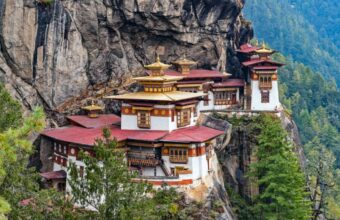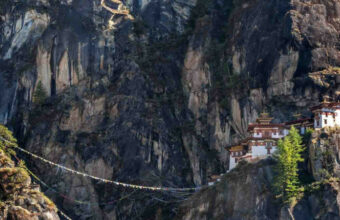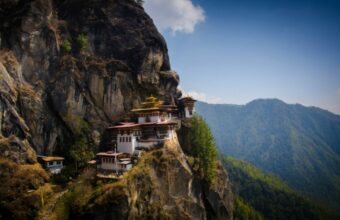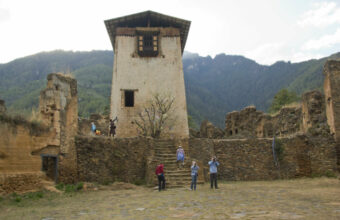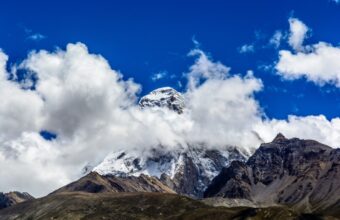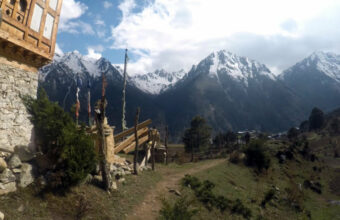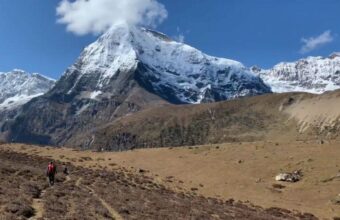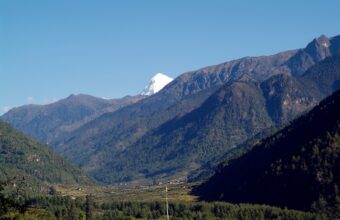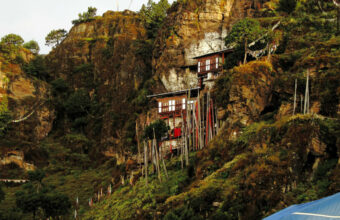Trekking in Bhutan
An expert guide to the best treks in Bhutan
Trekking in Bhutan promises a glimpse of the Himalaya that few get to experience. The country has all the huge snow-capped peaks you'd expect along the border with Tibet, plus plenty of epic high passes, glittering turquoise glacial lakes and even the occasional snow leopard.
What it doesn't have is Nepal-style crowds or the infrastructure of trekking lodges and tradition of independent trekking. Here, trekking is all organised, expedition-style, and costs more than anywhere else in the Himalaya.
I’ve been lucky enough to spend many months travelling and trekking in Bhutan while researching five editions of travel guides to Bhutan. To do this independently would have cost me tens of thousands of US dollars.
So why spend all the extra money to come trekking here? The main thing I noticed when visiting here after Nepal was the lack of crowds. Your campsites are in remote valleys, not yet connected by well-trodden paths, and the enchanting forest trails are some of the most beautiful in the Himalaya.
There's a wide diversity of hiking in Bhutan. The most adventurous routes climb over a series of high passes into the remote, rugged regions of Lingzhi, Laya and Lunana, dotted with fortresses, yak pastures and hanging glacial valleys. The peaks here are jagged and raw and it feels like very few people have gone here before you. There are few places where you can find that these days. If you can afford it, look no further.
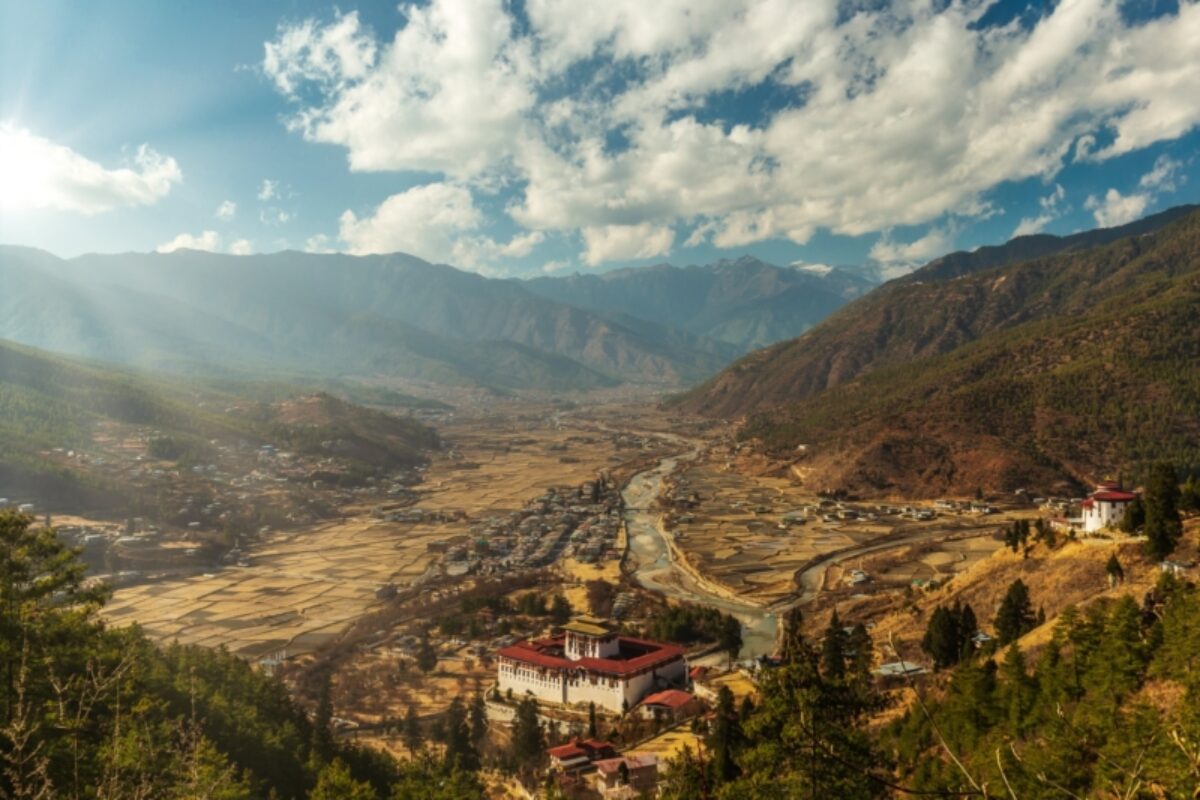
Bhutan's stunning Paro Valley
The best treks in Bhutan
Our experts' top picks
Of all Bhutan's trekking regions I'd say that Laya is my favourite, because of the mix of great mountain scenery and rich local culture. The Layap women here wear fabulous woven bamboo hats and the men are mostly yak herders.
-
Bhutan
View trips -
Bhutan
View trips -
Bhutan
View trips -
Bhutan
View trips -
Bhutan
View trips -
Bhutan
View trips
Planning a Bhutan trek
Everything you wish you’d known before you booked
How to deal with the infamous tourist tax
Bhutan is notorious for its hefty tourist tax (officially, Sustainable Development Fee, or SDF) which is currently priced at USD$200 per person per day (Indian, Maldivian and Bangladeshi citizens get a discount). The principle behind the SDF is to limit overall numbers and ensure that anyone who does visit makes a sizeable contribution to the country’s development and infrastructure. Like it or not, it’s a bold solution to a problem that has plagued much of the rest of the world.
Discounts are currently available which are intended to encourage longer stays. If you pay seven days of the fee, you now get another seven days free (worth US$1,400). If you pay for 12 days, you can get up to 18 more free (worth US$3,600). You have to make your trip before the end of 2024 to qualify.
Jomolhari base camp
Part of the allure of Bhutan is its fiercely protected reputation for remoteness and unspoiled tranquillity, which makes recommending Jangothang (aka Jomolhari Base Camp) a bit of a contradiction: with half a dozen trek routes converging here, this is the one vaguely busy spot. But the views looking up at the eastern face of Jomolhari (7,314m) are simply astonishing, and well worth tolerating some crowds for. I recommend spending at least two nights here (important for acclimatisation), preferably three, as there are some amazing day hikes to explore.
Before and after your trek
In some ways the real draw of Bhutan is its stunningly preserved traditional culture, more than its raw Himalayan scenery. Don't get me wrong, the mountain scenery is superb, but then so is Nepal's – at a fraction of the price – so I'd always recommend adding on an equal amount of time sightseeing in the Paro, Thimphu and Punakha valleys. To come only for trekking is to miss out on Bhutan's true uniqueness.
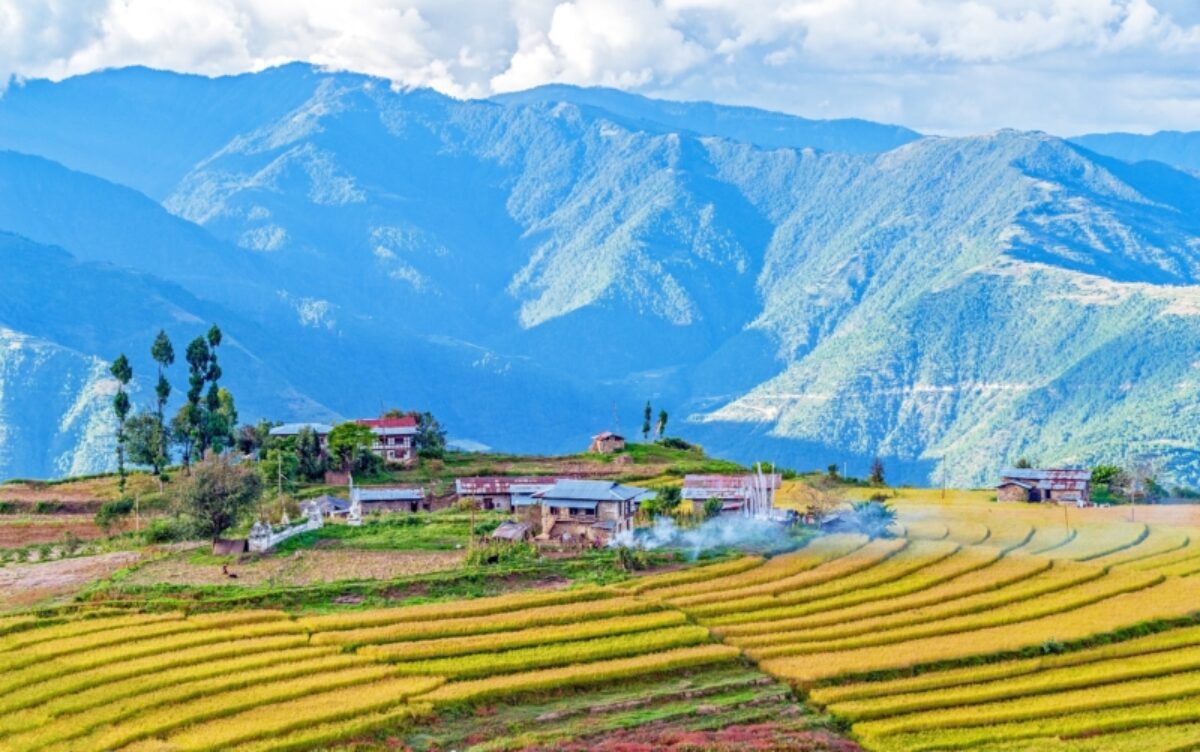
Trashigang, eastern Bhutan
Bhutan trekking FAQs
Your questions, our expert answers
Question
When is the best time to go trekking in Bhutan? Is it year-round? What are the best and worst months?
Answer
The best months are October and November for the clearest views, and April and May for spring blooms. Don't come in the monsoon (July, August).
Question
Is altitude sickness a problem while trekking in Bhutan?
Answer
Acclimatising properly is absolutely essential to a successful trek in Bhutan. Many passes are over 5,000m, and most are over 4,000m. Most treks have built-in acclimatisation days and it's essential to follow these.
Question
How challenging is the trekking in Bhutan? Would you recommend it, say for a fit & active 60 year old?
Answer
There's a wide range of treks on offer in Bhutan. The 25-day Snowman Trek is one of the world's toughest treks. Less physically challenging but still adventurous treks include the popular Druk Path, or you can hike a section of the 400 km-long Trans-Bhutan Trail, which sticks to lower altitudes and offers village homestays.
Question
Can you trek in Bhutan solo or without a guide?
Answer
No, all treks (indeed all travel) in Bhutan have to be fully organised and accompanied by a guide and trekking agency staff, who will arrange everything. On my first 'solo' trek here I had a guide, cook, three other staff and nine pack horses - just for me!
Question
What sort of accommodations are there? Can we stay with locals?
Answer
Most trekking groups stay in their own double tents. A couple of route options (including the Trans-Bhutan Trail) overnight in village homes and there are good homestays in Laya.
Question
What kind of food should I expect on a Bhutan trek?
Answer
Bhutan is the only place where I've actually gained weight on a trek, thanks to the three meals a day (plus snacks) cooked up by trek staff. Breakfast is toast, cereal, coffee and often eggs. Dinner is a multi-dish feast of rice and vegetable curries; lunch is similar but cooked in the morning and transported in thermos dishes for a hot picnic. You'll even get French fries once or twice.
Question
Which is your favourite trekking region in Bhutan?
Answer
I'd say that Laya is my favourite region, because of the mix of great mountain scenery and rich local culture. The Layap women here wear fabulous woven bamboo hats and the men are mostly yak herders.
Question
Is it safe? How about for solo female travellers?
Answer
Yes, Bhutan is incredibly safe.
Question
What are the hardest and easiest treks in Bhutan?
Answer
The hardest, that's easy - the Snowman Trek. More people have summited Everest than completed this trek!
The easiest is probably the two-day Saga La Trek, which is really two half-days of walking bookended by some monastery and fortress sightseeing.
Another easy going trek, and one of my favourites, is the two-day Bumdrak hike. It's a one-nighter, staying in a luxurious fixed camp (real beds!) and the second day is all downhill, winding through lovely forests to temples and views above the famous Tiger's Nest Monastery, the country's single most famous sight.
Question
What gear can I rent in Bhutan?
Answer
Your trekking agency will provide tents, a mattress and a sleeping bag, but I'd advise you to bring your own sleeping bag and mat for comfort and familiarity. There's not much quality gear available to rent in Bhutan.
Question
What permits are required to trek in Bhutan?
Answer
In order to visit Bhutan you have to pay a Sustainable Development Fee of US$200 per person per day, on top of the cost of your trek (though there are currently some temporary discounts on this). Your trekking agency will then arrange all the national park and trekking permits that you need.
Question
How does trekking in Bhutan compare with Nepal?
Answer
Apart from the much higher costs, Bhutan sees a fraction of the trekkers who visit Nepal, so there are no crowds, no backpacker scene and no trekking lodges in Bhutan. The environment is much more pristine and the culture more intact, but the peaks are on a slightly smaller scale.
Question
Trekking in Bhutan is expensive! Is it worth the money?
Answer
Trekking in Bhutan is costlier than Nepal or India for sure, but remember that US$200 per day of your trip fee is going to fund healthcare, education and environmental protection in Bhutan. For me the feeling I get from having a stunning Himalayan valley or view to myself is really priceless. If you are happier with the social nature of teahouse trekking, then maybe it's not worth the cost for you.

